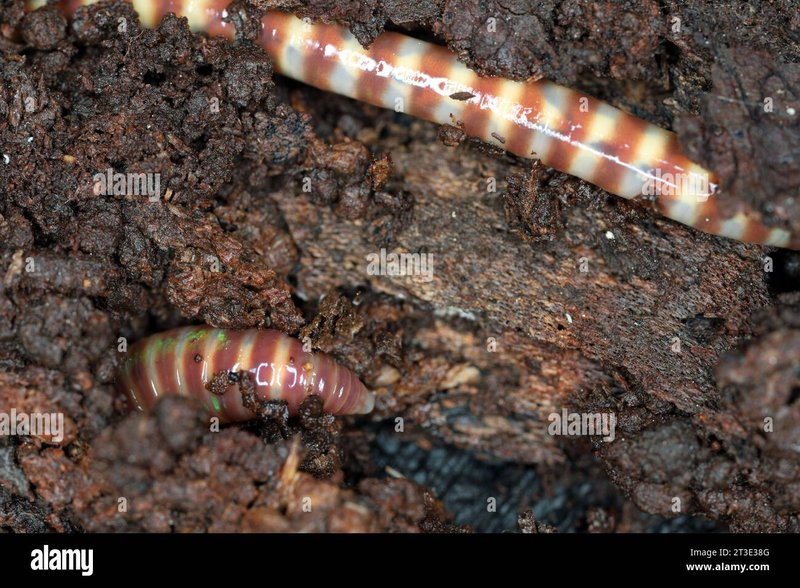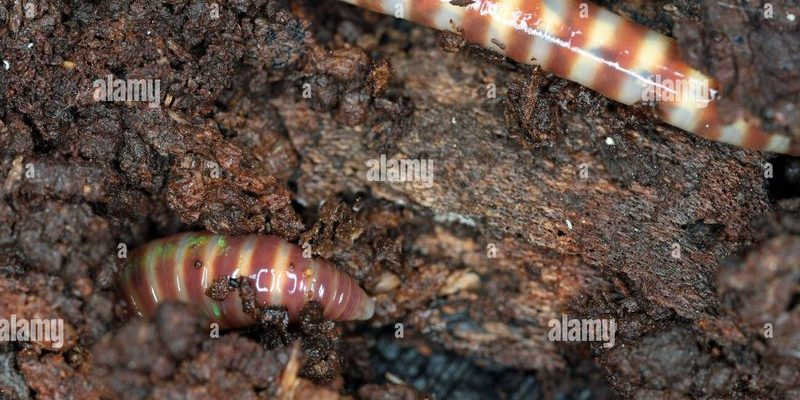
Picture habitat preferences like a cozy blanket—each type of soil, moisture level, and organic material makes their living space feel just right. These worms are not just dwelling in any old dirt; they have a knack for finding environments rich in nutrients, which is crucial for their survival and role in the ecosystem. Let me explain this fascinating little ecosystem and why it matters to us.
Understanding Eisenia Hortensis
Eisenia hortensis is a type of earthworm that’s often found in Europe and parts of North America. You might be wondering, what makes these worms special? Well, they’re not just your typical garden dwellers. Eisenia hortensis is known for its size and its nocturnal habits, which means they prefer to come out at night. This behavior helps them avoid predators and stay in optimal conditions.
These worms play a vital role in enhancing soil structure and fertility. They help break down organic matter, which in turn, enriches the soil. This makes them valuable for gardeners and farmers who want to improve plant growth naturally. Understanding their habitat preferences can help us mimic their natural environments and support their presence.
Soil Type and Composition
One of the first things that come to mind when talking about habitat preferences is soil type. Eisenia hortensis thrives in loamy and sandy soils that are well-drained. These soil types hold moisture well, which is crucial for the worms’ survival.
Let’s break it down:
- Loamy Soil: This type combines sand, silt, and clay, making it rich in nutrients without being too compact. Eisenia hortensis loves to burrow here, as it allows for movement and access to organic matter.
- Sandy Soil: Though it drains quickly, Eisenia hortensis prefers this soil as it allows them to navigate more easily. It also encourages good oxygen flow, which is essential for their respiration.
You’ll often find these worms in areas where the soil is rich with decomposing leaves or compost. They dig their homes close to the surface, where they can munch on organic materials that provide them with food and moisture.
Moisture Levels
Moisture is another essential component of Eisenia hortensis habitat preferences. These earthworms need a certain level of moisture to survive; too little, and they risk drying out, too much, and they can drown. They typically thrive in environments that are consistently damp but not waterlogged.
What does this mean for their wild habitat? Eisenia hortensis is often found:
- In moist forest floors where fallen leaves and decaying wood provide food and shelter.
- Near riverbanks or ponds, where the ground stays damp due to proximity to water sources.
Creating the right moisture levels in your garden can attract these helpful worms. If you’re planning to encourage Eisenia hortensis to take up residence in your backyard, consider keeping the soil moist by regularly watering and adding organic mulch, which can help maintain that perfect balance.
Organic Matter and Nutrient Availability
Eisenia hortensis isn’t picky when it comes to food, but they do have preferences. They thrive in environments rich in organic matter, which is essential for their diet. This includes decaying leaves, straw, and kitchen scraps.
When Eisenia hortensis dine on this organic matter, they break it down and convert it into humus, enriching the soil with nutrients. Here’s how it works in nature:
– Decomposing Plants: Worms are attracted to areas rich in plant material. The more diverse the plant life, the better the food source.
– Compost: Eisenia hortensis is often found in compost heaps, where they feast on a mix of food scraps and yard waste. Compost heaps can provide a vertically varied habitat that keeps the worms happy and fed.
Encouraging biodiversity in your plant selection can not only help sustain these worms but can also result in healthier soil for your garden plants!
Temperature Preferences
Temperature plays a crucial role in the habitat of Eisenia hortensis. These worms prefer moderate climates, typically between 50°F and 68°F (10°C and 20°C). Extreme temperatures can be harmful and even deadly for them.
In the wild, Eisenia hortensis can often be found:
- During the spring and fall when temperatures are mild.
- In shaded areas that protect them from direct sunlight, which can dry out the soil quickly.
If you’re trying to create an inviting habitat for these worms in your garden, consider planting shade-providing plants or adding barriers to protect them from harsh sunlight. This can help keep the soil temperature regulated and keep your Eisenia hortensis happy.
Human Impact on Habitat
Humans play a significant role in the habitats of Eisenia hortensis. Urban development, agriculture, and pollution can severely disrupt their natural environments. It’s important to understand how our actions directly affect these little creatures.
Here’s what to keep in mind:
– Soil Disturbance: Frequent tilling or turning of the soil can disrupt the habitats of Eisenia hortensis. Minimizing soil disturbance can help maintain the ecosystems they thrive in.
– Chemical Use: Pesticides and fertilizers can harm these worms. These chemicals can affect their health and the quality of the soil they reside in. Embracing organic gardening practices can better protect these beneficial creatures.
Planting native plants and maintaining healthy soil ecosystems can significantly improve habitats for Eisenia hortensis, ensuring they continue to thrive alongside human activities.
Create Your Own Eisenia Hortensis Habitat
So, you’re ready to welcome some Eisenia hortensis into your garden? Here’s how to create the perfect habitat:
1. Choose the Right Soil: Aim for a loamy or sandy soil mix. If you’re starting from scratch, consider adding compost to enrich the soil.
2. Keep It Damp: Regularly water your garden, but avoid waterlogging. Adding organic mulch can help retain moisture.
3. Include Organic Material: Create a compost pile and add kitchen scraps, leaves, and grass clippings to attract Eisenia hortensis.
4. Add Shade: Use plants or structures to provide shade and protect your worms from extreme temperatures.
5. Limit Soil Disturbance: Tread lightly in your garden. Over-tilling can disrupt the worms’ homes, so consider methods like no-till gardening.
By following these steps, you can create a thriving environment for Eisenia hortensis and enjoy the benefits of healthy soil and vibrant plant life in your garden.
In conclusion, understanding the habitat preferences of Eisenia hortensis opens up a whole new world of possibilities for both gardeners and nature lovers. By creating an inviting environment for these amazing worms, we not only support their survival but also enhance the health of our gardens and ecosystems. Remember, the key is in the details—soil type, moisture, organic matter, and temperature all play a part in making these little creatures comfortable and happy. By bringing some of that wild magic into your backyard, you’re playing a role in nurturing nature’s balance.

